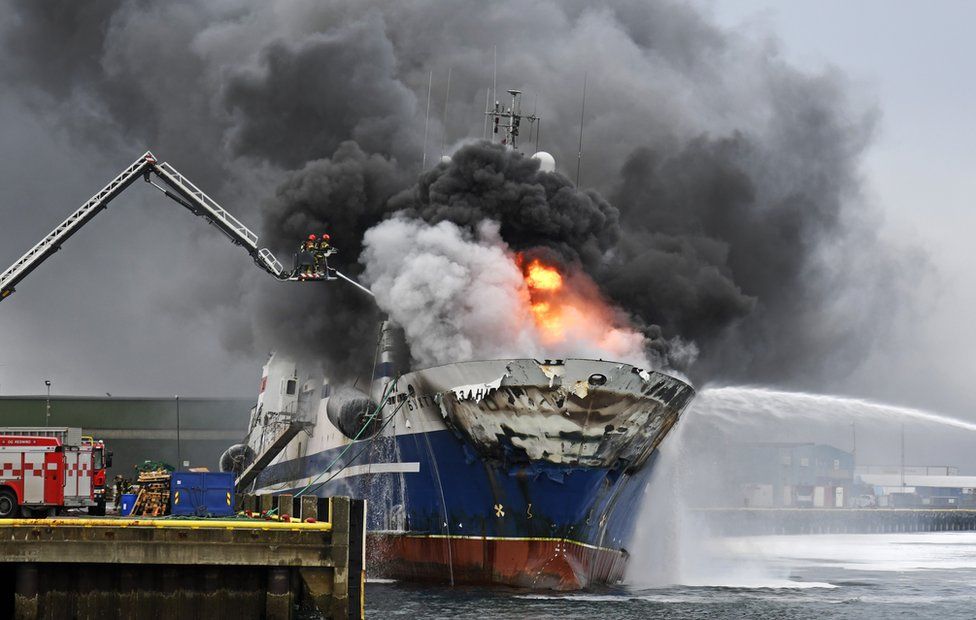
Don’t ask for advice and then ignore it. In years gone by, with other ‘envelope-pushers’ we developed a ‘cradle-to-grave’ insurance solution for a mega hamburger chain. What began as a late-night discussion about the time element aspect of marine cargo risks evolved into a unique solution using the Lloyd’s and London company markets combined with the marine one.
Every step from grain fields, slaughterhouses, transport, labor, political and credit risks including currency inconvertibility, repatriation risks (and so much more) to the end-user fast food outlet were identified and amazingly ‘packaged’ into a single policy.
This had never been done before. But then times were different then than today. Now we face a plethora of risks most of which didn’t exist in the 1980s:
- Digital Transformation
- Financial Challenges
- Geopolitical Instability
- Aftermath of Covid
- ESG way of working
- Changes in consumer demand
- Growing risk of cyber attacks
Thinking through supply chain risks is critically important when structuring a global insurance program and using insurance when doable.
It’s nearly impossible to plan accurately and precisely for a number of reasons, the big one being geopolitical developments in an ever-changing landscape.
Geopolitical risks arise – logically – from geopolitical developments:
- Tensions with China
- Russia / Ukraine war
- Coups in Africa
- Israel / Hamas war
- Sanctioned and other Government-imposed company restrictions
- and the oldest trick in the book: Tariffs
To begin you must consider and understand what supply chain issues arise due to geopolitical risks.
- Putting access to important suppliers at risk
- Ukrainian suppliers of neon
- Making it difficult for suppliers to meet quality and delivery commitments
- High-tech products from Israel
- ·Limiting supplies and raw materials
- Rare earths from China (FYI, rare earths aren’t all that rare but China invested heavily in the mining sector)
- ·Pushing global and regional prices higher
- Semiconductors
- Increasing supply chain costs
- Developing new manufacturing suppliers
- Complicating logistics
- Unavailable shipping routes
As indicated above there are many other risks. Climate disasters. New tariffs and sanctions. Pandemic-induced shortages. Military conflicts in multiple regions.
Each risk event introduces economic shockwaves that underscore the importance of geographically diverse supply chains for companies.
And new risks emerge when moving supply chains. For example, doing business is a new country with unfamiliar rules and regulations to name just two challenges. Other challenges might include terrorism, bribery, financial criminality, human trafficking or other risks.
The changing shape of global supply chains
A tale of two canals
- In late 2023, military conflict and extreme weather created new challenges for commerce
- Red Sea attacks impacted traffic through the adjoining Suez Canal
- An extended, unprecedented drought in Panama sharply reduced the supply of water to the canal. The Panama Canal locks are a lock system that lifts ships up 85 feet (26 metres) to the main elevation of the Panama Canal and down again. 5% of global trade transits through this canal system
Conflict and hidden risk
– The invasion of Ukraine impacted the world’s largest supplier of neon (Neon is a colorless, odorless, inert monatomic gas under standard conditions, with approximately two-thirds the density of air. Uses of neon include lightning arrestors, high-voltage indicators, television tubes and meter tubes.)
– The October 7 attacks by Hamas triggered a massive calling up of reserves by the Israeli Defence Force. This left thousands of Israeli-based companies without their employees – including many suppliers in the global technology space.
The U.S. and China reshape trade ties
– U.S. companies are diversifying their supply chains and reducing their reliance on China
– Countries like India, Mexico and Vietnam with favorable geography, low business costs and existing manufacturing capabilities stand to gain the most as these dynamics play out.
How can geopolitical risks be managed?
What supply chain issues do geopolitical risks create?
As above,
- Putting access to important suppliers at risk
- Making it difficult for suppliers to meet quality and delivery commitments
- Limiting supplies and raw materials
- Pushing global and regional prices higher
- Increasing supply chain costs
- Complicating logistics
Mitigation options include:
- Prepare a risk-informed sourcing plan (e.g., investment in qualifying new suppliers)
- Internally finance higher inventory levels
- Price hedging instruments like airlines do with fuel costs, also insurance to the extent it is available
- Internally finance longer lead times and higher costs
So how do you navigate these challenges?
- Reduce silos. What does this mean? Businesses must avoid treating each source of risk as a silo. Rather they must look at risks holistically, considering how they interrelate with one another – because invariably there are commonalities.
- Data analytics
- Collecting, sharing and analyzing data provides greater (clearer) visibility and agility
- Pro-active mitigation
- Given their importance, complexity and vulnerability, supply chain risks are now front and center in the C-Suite
- Proactive risk assessment is the new normal. Gone is the old model of reactive management that only becomes a priority when disruption strikes.
People are going to have to be brave and push the envelope in this new world. The old standbys are gone. There are no off-the-bookshelf solutions. And while not all the risks might be identifiable, it makes sense to prioritize the risks and focus on the most important ones. Then make a plan to mitigate what could become an economic disaster.
I wrote this piece after listening to a RIMS-sponsored webinar (Resilience in Turbulent Times) presented by James Hargreave, Director, Data Analytics Practice Group and Andrei Quinn-Barabanov, Sr. Director Supply Chain Risks, Moody’s
Family discussion
On a personal note, I read and distributed the below Wall Street Journal article to my family:
On Columbia University and Coach Handbags (link to article)
A degree’s value, in both money and status, depends on the reputation of the institution’s brand.
My son (NYU Stern grad) quickly replied: “I feel like this article would’ve been more meaningful if written by someone who went to an Ivy.
I have a simple solution for these protesters to obtain moral clarity and prevent their schools from making hard choices about their actions: simplify your request in protest.
Make all protests about a change of government in Israel and resignation of Benjamin Netanyahu.
Then you don’t ever run the risk of conflating statements against Jews or the people of Israel (or even the nation of Israel, a democracy), instead of the real issue at hand: the current government of Israel.
Presently, the protesters (I didn’t know this until recently), are primarily asking for their schools to divest from any programs or investments that involve Israel - silly of course because Israel is a beautiful democracy and high-tech hub that’s an example for the region.
Instead, they should focus on calling for the resignation of president ordering strikes killing kids - seems obvious to me?”
My son-in-law (USC Leventhal School of Accounting) followed with: “This article would mean a bit more to me if there weren't so many protests at non-Ivy schools. Maybe it’s more of a ‘younger Americans are anti-war’ theme than an indictment on the ROI of an Ivy League degree. Who knows.
Meanwhile, don't take your eye off China...”
My son came back with: “Hard agree. Also, China (through TikTok and I’m sure other means) has been majorly signal boosting misinformation and content to drive protests to divide Democratic coalition and increase likelihood of a Trump election + degrading of US power/influence.
https://www.nbcnews.com/news/amp/rcna124476”
I assure you these two make dinner conversation last long into the night. It’s important to listen, especially as I get older, to develop a clearer understanding of how younger future leaders of our country think and perceive the risks.
With my family I had the pleasure of attending a wedding this past weekend in NY State up the Hudson a bit from NYC. Apart from a few of us ‘oldies’, it seemed the entire cohort of a recent Stanford Business School class was present. It was an interesting mix of thirty-something-year-olds who acted well beyond their years. It was reassuring to see this group of future leaders smiling, behaving, and talking reasonably about things that need to be talked about.
With so many talk shows and ‘news’ outlets, it was super refreshing to be among smart young people who ‘get it.’ I am now more hopeful that cooler heads will prevail. As I write these closing lines, the TV in the background is announcing that the President of Columbia has given the order for protestors to clear out or face suspension. Hip hip hurray. As one of the aforementioned SBS business school graduates who now teaches at Columbia told me, the school has been using SMS to alert students and faculty how to enter campus, where and what to avoid so it’s not difficult to recognize that many of the protestors might not even belong on campus. Once again, the media needs to get its reporting fact checked.
Parting thoughts
From my iPhone ‘Notes’:
Why not talk about how we are alike instead of how we are so different.
When seeking advice from people who know more than you, tell them what you plan to do first and then ask them for their reaction.















